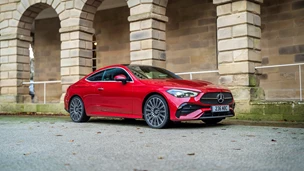Ever since the German money came in, SEAT has been billed as the trendy, exciting arm of the Volkswagen Group. Indeed, a few years ago it was calling itself Spain's answer to Alfa Romeo, with all the implied associations of heavily suntanned Mediterranean types dashing round the countryside at never less than 8000rpm.There is undoubtedly a certain flair to a lot of what SEAT has done recently, but the curious thing is that it has never really produced an outstandingly sporty car. Quick cars? Yes, a few, though the bulk of the product has in fact been devoted to providing useful and relatively inexpensive family transport.But sporty cars? Well, if you're going to call yourself the new Alfa Romeo (which in fairness is a line SEAT didn't keep quoting for long) you have to have something which might be compared with a car like the utterly bonkers Alfa 145 Cloverleaf, to take just one possible example. And with the possible exception of the Ibiza Cupra, SEAT just hasn't built cars like that up till now.Okay, then, so what about the León 20v T Sport? This, along with the more lavishly equipped León 20v T Cupra, is the equal most powerful production SEAT there has ever been. Fitted with VW's turbocharged, five-valves-per-cylinder, variable inlet manifold and valve timing 1.8-litre engine, it produces 180bhp and is jolly quick - in fact there's not much more performance to be had from anywhere else at the current list price (bearing in mind how little meaning that has these days) of just under £16,000.The maximum power output is impressive, but not nearly as much as the way the power comes in almost regardless of what the engine was doing when you pressed the throttle. The surge of acceleration is almost unprecedented in a car of this size, and it means that even if you have only a short straight in which to get past the lorry in front, you can complete the move and be back on your own side of the road almost before anyone else has twigged what's going on.The spread of power is so tremendous that you could make very smart progress with the turbo León even if it only had a three-speed gearbox. Instead, it has more gears than any other car in the range (six, where the lesser models make do with five). The ratios are actually very well chosen, but given the engine's behaviour there is no technical reason why there should be so many of them. The extra complexity simply means greater expense, more weight and a higher proportion of the journey time spent with the clutch down.Why six gears, then? Dear Puzzled - it's down to marketing policy, and the assumption that in pub-land a car with six gears is twenty percent better than one with five.(End of rant, I promise. One last thing about the gearbox, though - fourth gear is actually higher than fifth! Yes, honestly. The ratios are 1.151:1 and 1.166:1 respectively. But the revs still drop when you change up, the reason being that the top two gears are connected to a much higher-ratio final drive than the other four. Worth bearing in mind if you happen to get involved in a discussion about motoring trivia.)The León's hardware, then, suggests that this should be a very sporting machine indeed. The optional Ovni Yellow colour scheme of the test car, available only on turbocharged Leóns, rammed the point home with further gusto. But you don't have to drive very far to realise that this is a much more relaxed machine than it pretends to be.It's partly due to the engine's manners. You just don't have to work the thing at all to make it produce more than adequate performance. One twitch of the right foot and away you go.The other important aspect is that although SEAT describes the suspension of this car (and the 1.6-litre SE) as "sports", it's not actually set up for frantic cornering. Apart from occasional jiggles on small bumps, you'd swear it had been designed for relaxed high-speed touring.Grip levels are certainly high, but vigorous cornering isn't nearly as much fun as you might expect. The most comfortable way of making good progress along twisty, empty roads is to take it reasonably easily round the bends and over the humps, and then use the power to squirt along the next straight before lifting off early for the next obstacle.This can be quite rewarding, and I must say I did enjoy several lonely cross-country trips. But is this really a sports car in the hot hatch tradition? No, it isn't. Maybe the forthcoming four-wheel drive version will be the one for the real enthusiasts.Second opinion: I don't reckon a car as big as this is in the hot hatch tradition anyway, but then I'm a grown-up who's got beyond the frantic cornering stage. The straightline performance is really something, and colour-blind characters who don't notice it's yellow of the most yellow seem to be confused by the SEAT front end. After one zap-out and zap-back-in overtaking manoeuvre I was given the fist by an oncoming but quite distant bus driver who must have thought it was a 1.4 Ibiza taking a big chance. Rather complex transmission set-up - was that why I made so many jerky gearchanges? Probably just not taking enough care. What a mile-eater for a long journey! Super on the hills. Much smoother and much more relaxed at high averages than the colour scheme suggests. The rear-on styling is a bit weird, but in terms of pounds per bhp, plus number of passengers it can carry, this is some bargain. Ross Finlay. Engine 1781cc, 4 cylinders Power 180bhp Transmission 6-speed manual Fuel 32.8mpg Acceleration 0-62mph: 7.7 seconds Top speed 142mph Price £15,995 Details correct at publication date



